Pyramiding is a condition that can affect tortoises of all ages, but it is most commonly seen in young tortoises.
It can be caused by a variety of things, including malnutrition, infection, and metabolic bone disease. In this blog post, we will discuss the causes, symptoms, and treatment of pyramiding in tortoises.
Key Takeaway
- Although pyramiding in tortoises is not always harmful, it is usually an indication of poor conditions and can lead to health issues if accompanied by dietary deficiencies.
- Pyramiding in tortoises is commonly caused by a combination of factors such as improper diet, lack of humidity, insufficient exposure to sunlight, and metabolic bone disease.
- While there is no cure for pyramiding in tortoises, providing a proper diet, temperature gradient, humidity levels, exercise, and addressing any underlying health issues can help prevent further progression of the condition.
What Is Pyramiding In Tortoises
Pyramiding in tortoises is a condition where the scutes on the tortoise’s shell grow abnormally upward, creating a pyramid-like appearance.
It is caused by environmental factors such as inadequate water intake, lack of UV light, inappropriate temperatures, and poor feeding habits resulting in an imbalanced diet with excessive protein.
As a veterinarian, I have seen many cases of pyramiding in tortoises and it can be a concerning condition that can affect the overall health and mobility of the animal.
While it cannot be cured, providing proper care and treatment can prevent it from getting worse.
Is Pyramiding Bad For Tortoises?

Pyramiding in tortoises is not always bad, but it can be an indication of poor conditions and may cause health issues if accompanied by dietary deficiencies.
As a veterinarian, I have seen cases where pyramiding has led to deformities in the tortoise’s shell and has caused problems with mobility.
In order to prevent pyramiding, it is important to provide a proper diet with a balance of nutrients and to maintain appropriate temperature and humidity levels in the enclosure.
Overall, while pyramiding may not be immediately harmful to tortoises, it is best to take preventative measures to ensure their long-term health and well-being.
What Causes Pyramiding In Tortoises
Pyramiding is a condition that can afflict tortoises and other reptiles, characterized by an abnormal growth of the scutes, or scales, on the animal’s shell.
This growth can cause the shell to take on a pyramid-like shape, hence the name. But, what actually causes pyramiding in tortoises?
1. Inaccurate humidity
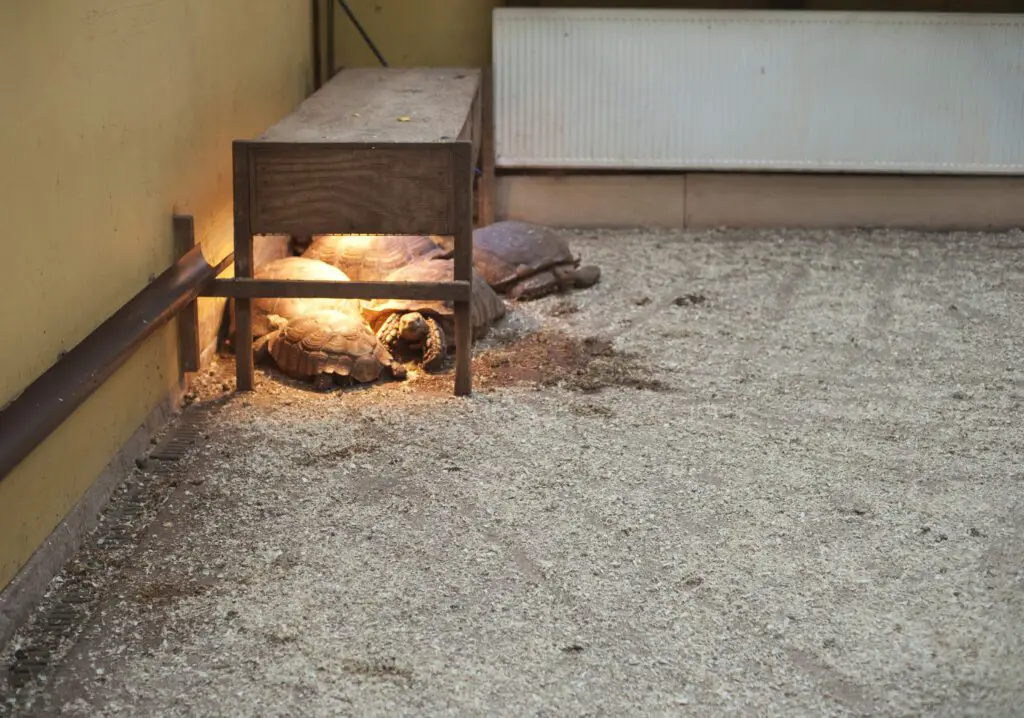
Many factors can contribute to the development of pyramiding in tortoises, but one of the most important is humidity. Tortoises require a very specific level of humidity in their enclosure, and even a small deviation from this level can cause problems.
If the humidity is too high, the tortoise’s shell will become soft and malleable, making it more susceptible to deformation.
Conversely, if the humidity is too low, the shell will become dry and brittle, making it more likely to crack. In either case, an inaccurate humidity level can lead to the development of pyramiding. Therefore, it is essential to maintain a precise level of humidity in the enclosure to help prevent this condition.
Tortoises come from a variety of climates, from dry deserts to damp rainforests. In general, it is important to maintain a relative humidity of between 30 and 50 percent. It is also important to provide a basking area where the tortoise can warm itself if the enclosure is too humid.
By taking these factors into account, you can create an enclosure that provides the ideal conditions for your tortoise.
2. Too small enclosure
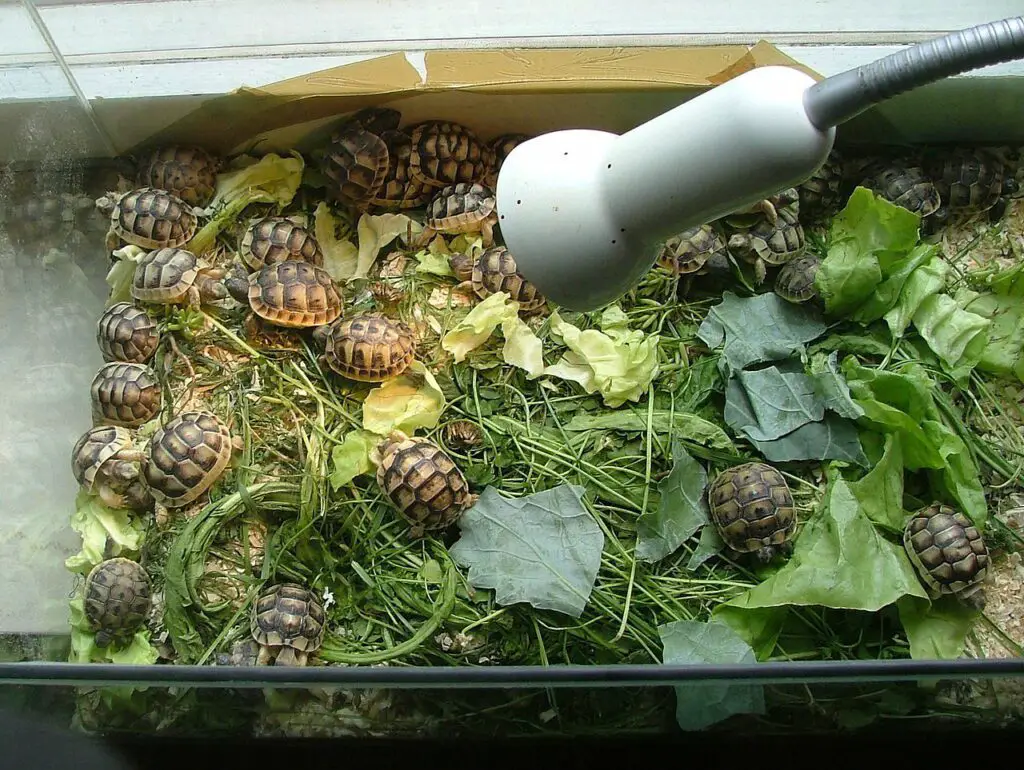
Tortoises are often kept as pets, and many people assume that they do not require much care. However, tortoises are actually very delicate creatures that need a specific environment in order to thrive.
One common problem that can occur in captive tortoises is pyramiding, which is when the turtle’s shell grows abnormally thick and pointy.
Pyramiding is often caused by too small of an enclosure. When tortoises are cramped for space, their shells cannot grow properly, leading to the formation of pyramids. Basically, when the enclosure is too small, there is not enough room for the items that a Tortoise needs in order to stay healthy.
A tortoise is a land-dwelling reptile that has a hard shell to protect its body. Tortoises can make great pets, but they require special care and housing. Here are some things you will need to provide for your pet tortoise:
First, you will need a suitable enclosure. Tortoises should have access to both sun and shade, so the enclosure should be large enough to accommodate both areas. The enclosure should also have a firm surface for the tortoise to walk on; gravel or sand is not suitable as it can cause digestive problems.
Secondly, you will need to provide appropriate food and water. Tortoises are herbivores, so their diet should consist mostly of leafy greens and vegetables. It is important to avoid giving them any plants that are toxic to reptiles. You should also provide a shallow dish of water for your tortoise to drink from.
In reality, a 40-gallon tank is enough for a single tortoise. In a 40-gallon tank, you will have enough space to accommodate all of the essential items that a Tortoise needs to have to avoid pyramiding.
3. Inactivity
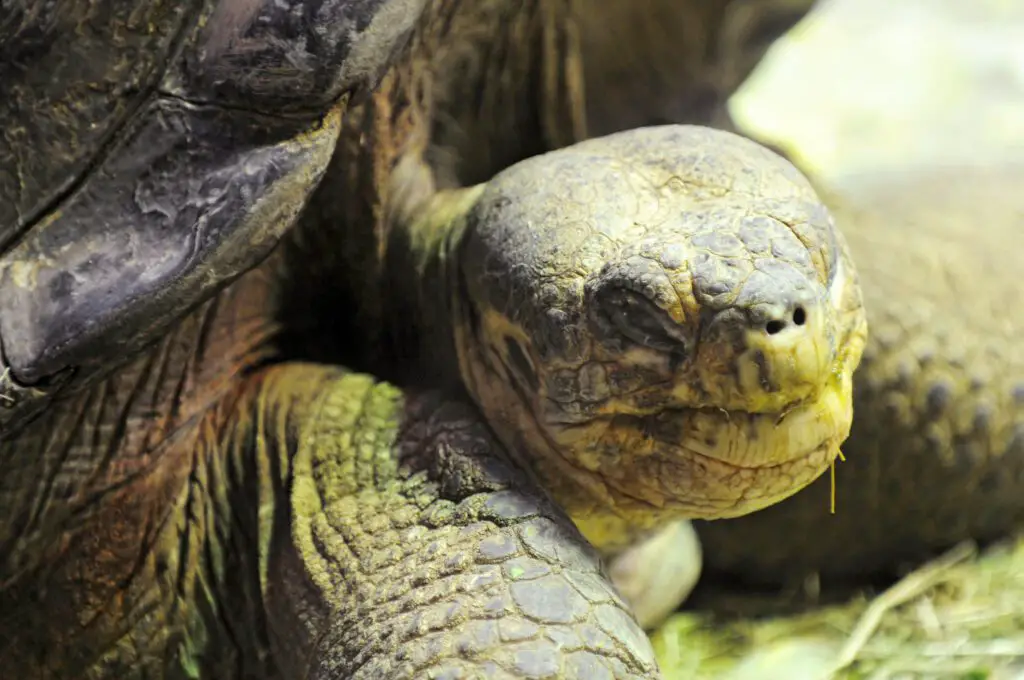
Pyramiding is a condition that can affect the shell of a tortoise. It is characterized by raised scutes, or plates, that form pyramid-like projections on the shell.
Pyramiding is most commonly seen in captive tortoises, and it is generally considered to be a cosmetic issue. However, in severe cases, pyramiding can cause deformities that make it difficult for a tortoise to move and feed properly.
Pyramiding is caused by a combination of genetics and environment. Some tortoises are more prone to pyramiding than others, but the condition is also influenced by diet and activity level.
Inactivity is a major risk factor for pyramiding, as it can cause the shell to grow unevenly. A lack of exercise can also lead to obesity, which puts additional pressure on the shell and further exacerbates the condition.
Because of this, it is important for tortoises to have plenty of room to roam and plenty of opportunities to exercise. By providing a stimulating environment and a healthy diet, owners can help reduce the risk of pyramiding in their tortoises.
4. Very poor diet
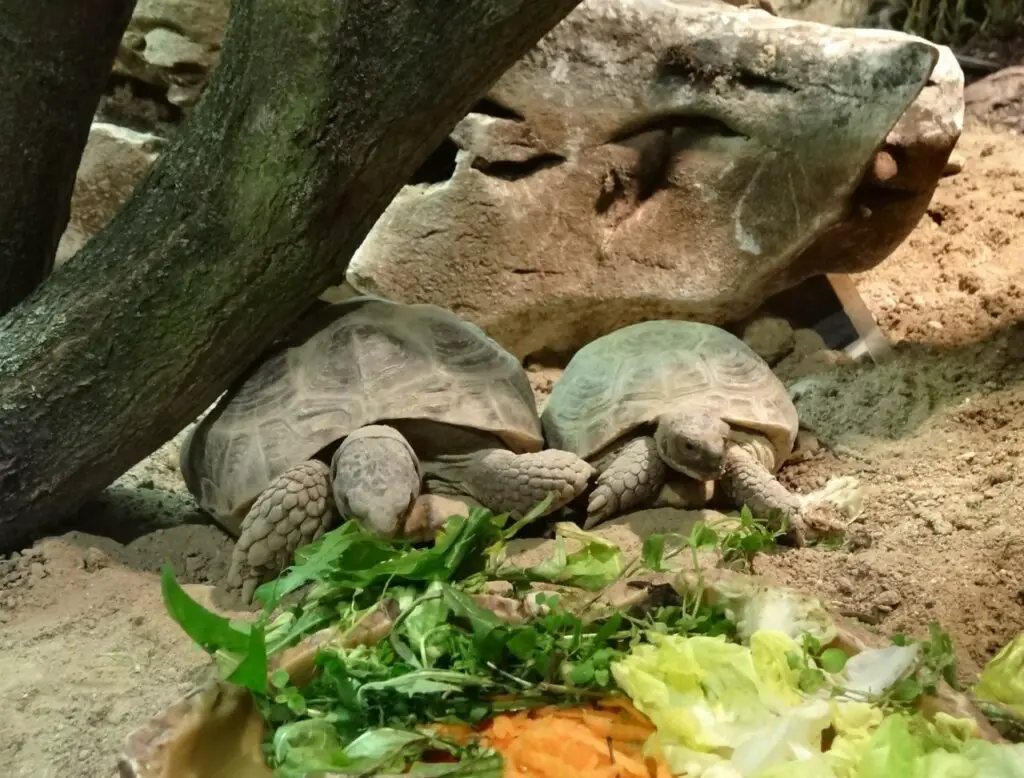
Pyramiding is caused by a number of factors, but poor diet is one of the most common. A diet that is too high in protein and fat can cause the shell to grow too rapidly, leading to the formation of pyramids. In addition, a lack of essential nutrients can also cause shell deformities.
By ensuring that your tortoise has a balanced diet, you can help to prevent pyramiding and keep your pet healthy and happy.
Tortoises are a type of reptile that is found in a variety of habitats around the world. They are known for their hard, protective shells and their slow, methodical movements.
Tortoises are also popular pets, and many people are curious about what type of diet these animals need to stay healthy. While there is some debate on the subject, it is generally agreed that a diet rich in vegetables is the best way to keep a tortoise healthy.
Leafy greens, squash, and carrots are all good options, and most tortoises enjoy eating fruit as well. It is important to avoid giving tortoises processed foods or those high in sugar, as these can lead to health problems.
5. No basking area
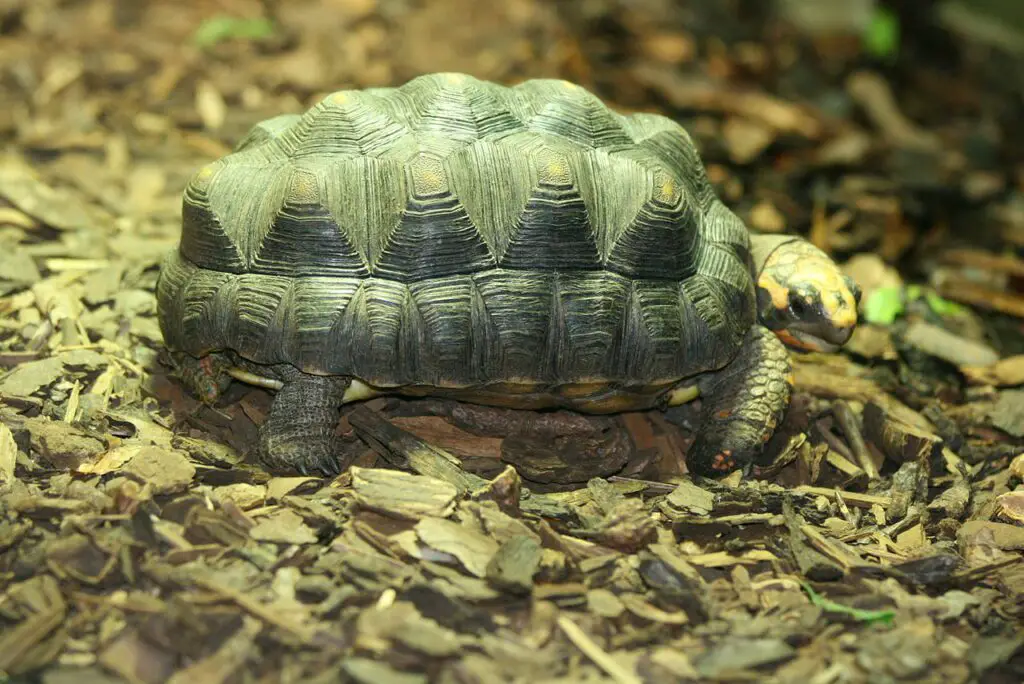
Pyramiding in Tortoises can also be caused by a lack of basking areas in enclosures. Without a raised, warm area to bask in, tortoises cannot properly thermoregulate their bodies.
As a result, they are more likely to experience problems with shell development. In severe cases, pyramiding can make it difficult for tortoises to move or eat, and can even lead to death.
Tortoises are ectothermic, meaning they rely on external sources of heat to regulate their body temperature. In their natural habitat, they bask in the sun to stay warm.
When kept as pets, it is important to provide them with a basking area that mimics their natural environment as closely as possible. The basking area should be located in a spot that receives plenty of direct sunlight throughout the day. It should also be large enough for the tortoise to stretch out and move around freely.
A basking platform can be made from a variety of materials, such as sand, rocks, or brick. It is important to avoid using materials that retain heat, as this can cause the tortoise to overheat. Once the basking area is set up, it is important to monitor the tortoise closely to make sure it is not overstaying its welcome in the sun.
6. Dehydration
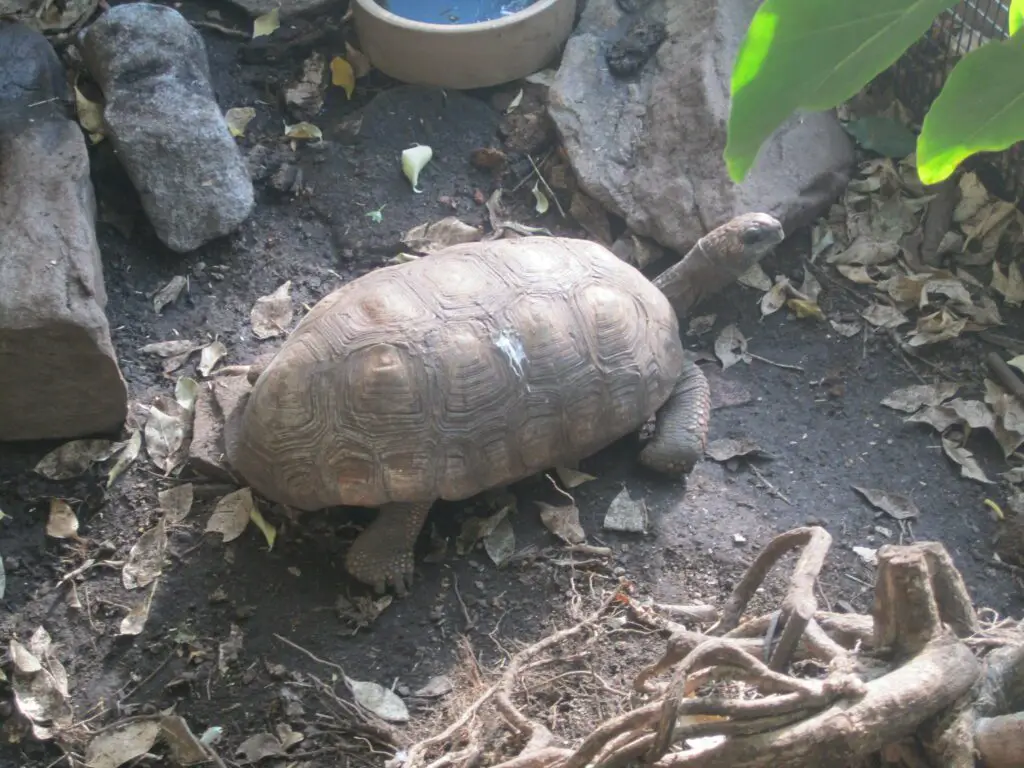
Dehydration is a common problem for tortoises, and it can lead to a condition known as pyramiding. Pyramiding occurs when the shell fails to grow properly, resulting in raised bumps and ridges.
The condition is most commonly seen in desert tortoises, but it can also affect other species. Dehydration is thought to play a role in the development of pyramiding because it interferes with the absorption of calcium.
Without enough calcium, the shell cannot grow properly. In addition, dehydration can cause the shell to become thinner and more fragile, making it more likely to develop pyramiding.
If your tortoise is showing signs of dehydration, it is important to seek veterinary care immediately. With proper treatment, dehydration can be reversed and the shell may return to its normal shape.
Symptoms of Pyramiding In Tortoises
While there are no early signs or symptoms that a tortoise is about to pyramid, there are recognizable symptoms of pyramiding itself.
Visible Changes in Shell Texture
The most obvious sign of pyramiding is the abnormal upward growth of individual scutes on the tortoise’s shell, causing it to resemble a pyramid. The scutes may also appear to be dry and flaky or have a rough, textured appearance.
Swelling and Deformity
As pyramiding progresses, the tortoise’s limbs may become swollen or twisted, with the joints appearing deformed. This can lead to difficulty moving or walking normally, with the tortoise exhibiting signs of pain or discomfort.
Changes in Behavior
Tortoises with pyramiding may exhibit changes in behavior, such as decreased activity levels, loss of appetite or interest in food and water, and lethargy.
As a veterinarian, I have seen firsthand the effects that pyramiding can have on a tortoise’s health and well-being, and it’s crucial to take preventative measures and seek professional support if you notice any symptoms of pyramiding in your pet.
By providing proper care and attention, you can help ensure that your tortoise thrives and lives a long, healthy life.
How To Treat Pyramiding In Tortoises
Pyramiding in tortoises cannot be cured, but with proper care and treatment, you can prevent it from progressing further.
Provide Appropriate Temperature Gradient
One of the most important steps in treating pyramiding in tortoises is to provide the appropriate temperature gradient for your tortoise. This involves creating a basking area with a heat lamp to simulate the natural sun exposure that tortoises would experience in their native habitats.
Promote Physical Activity and Exercise
Physical activity and exercise are also crucial in treating pyramiding in tortoises. Encourage your pet to move around and explore its enclosure, providing ample space for exercise and activities like climbing on rocks and logs.
Arrange a Balanced Diet
A balanced diet that is rich in fiber and calcium and low in protein and fat is also essential for preventing pyramiding in tortoises. Offering a variety of fresh vegetables, fruits, and leafy greens along with commercial tortoise feed will help ensure that your pet is receiving all the necessary nutrients.
Monitor Humidity Levels
Maintaining proper humidity levels in your tortoise’s enclosure is also important for preventing pyramiding. Ensure that there is adequate water available at all times. Consider using a humidifier or misting the enclosure to keep the air moist says Reptiles Magazine.
FAQs
Can pyramiding in tortoises be cured?
No, pyramiding cannot be cured, but with proper care and treatment, it can be prevented from progressing further.
Is pyramiding in tortoises painful for the animal?
It’s unclear whether or not pyramiding causes pain for the animal, but it can affect their mobility and overall health.
Can pyramiding in tortoises be reversed?
No, pyramiding cannot be reversed, but providing proper care can prevent it from getting worse.
Can pyramiding in tortoises be prevented?
Yes, pyramiding can be prevented by providing appropriate temperature, humidity, and dietary conditions for your tortoise.
How can I tell if my tortoise is suffering from pyramiding?
Symptoms of pyramiding include the visible deformation of the shell, with individual scutes raised above the normal dome shape of the shell, swelling or deformity in the tortoise’s limbs, and changes in behavior such as lethargy or loss of appetite.
Conclusion and final thoughts
Pyramiding in tortoises is a common phenomenon that occurs due to genetics, diet, and environmental conditions.
While it may seem like an alarming condition at first, it is important for tortoise owners to understand that pyramiding is not always harmful and can even be reversed with proper care.




